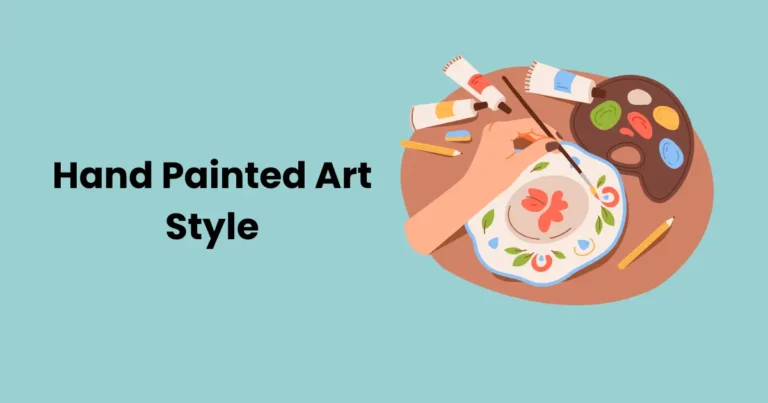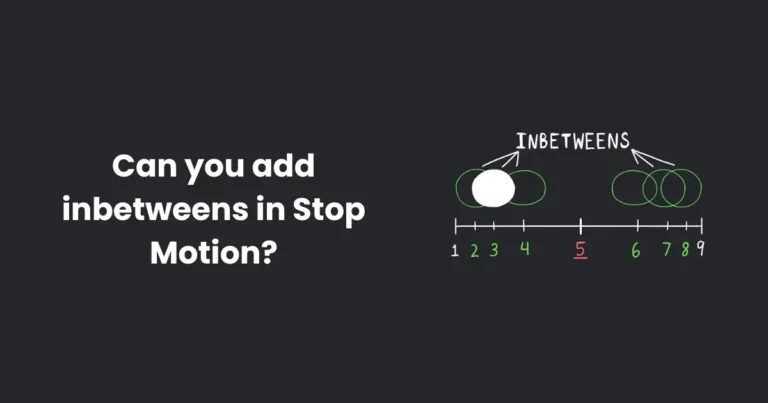What is Surreal Animation | WHY Surrealism Matters To Animators

Contents
- 1 The History of Surreal Animation
- 2 Characteristics of Surreal Animation
- 3 Famous Examples of Surreal Animation
- 3.0.1 1. Destino (2003)
- 3.0.2 2. Fantastic Planet (La Planète Sauvage, 1973)
- 3.0.3 3. Yellow Submarine (1968)
- 3.0.4 4. The Brothers Quay (Various Short Films)
- 3.0.5 5. Adventure Time (2010–2018)
- 3.0.6 6. Fantastic Mr. Fox (2009)
- 3.0.7 7. Don’t Hug Me I’m Scared (2011–2016)
- 3.0.8 8. Jan Švankmajer’s Films
- 3.0.9 9. Rick and Morty (2013–present)
- 3.0.10 10. Paprika (2006)
- 4 Techniques Used in Surreal Animation
- 5 Creating Your Own Surreal Animation
- 5.1 1. Develop a Concept
- 5.2 2. Create a Nonlinear Narrative
- 5.3 3. Design Surreal Characters and Environments
- 5.4 4. Choose Your Animation Style
- 5.5 5. Experiment with Transitions and Movement
- 5.6 6. Incorporate Symbolism and Metaphors
- 5.7 7. Pay Attention to Sound Design
- 5.8 8. Use Post-Production to Enhance the Surrealism
- 5.9 9. Seek Inspiration from Surreal Masters
- 5.10 10. Embrace the Unconventional
- 5.11 11. Share Your Work
- 5.12 Conclusion
Surreal animation is a captivating artistic form that blends the dreamlike essence of surrealism with the dynamic movement of animation. Rooted in the surrealist movement of the early 20th century, this unique style creates a mesmerizing visual experience that challenges the boundaries of reality and logic. By embracing unexpected juxtapositions, bizarre imagery, and symbolic storytelling, surreal animation transcends conventional narrative techniques to explore the depths of human imagination.
What sets this animation apart is its ability to evoke powerful emotions and provoke thought through abstract and symbolic visuals. It often delves into themes like identity, dreams, and subconscious desires, offering viewers a multi-layered experience. From the hauntingly beautiful works of Salvador Dalí-inspired animations to contemporary masterpieces that experiment with digital tools, surreal animation remains a fascinating medium that pushes the limits of creativity.
Whether you’re a fan of surreal art or an aspiring animator, exploring the world of surreal animation opens up endless possibilities to merge the ordinary with the extraordinary. In this article, we will dive into its origins, techniques, and influence while discovering how it continues to reshape the world of animation today.
The History of Surreal Animation
Surreal animation finds its roots in the broader surrealist art movement, which emerged in the early 20th century. Founded by André Breton in the 1920s, surrealism sought to explore the subconscious mind, dreams, and irrational juxtapositions that defied logical explanation. This revolutionary art movement quickly influenced various mediums, including literature, painting, film, and eventually animation.

Origins of Surrealism in Art
Surrealism originated as a response to the rigid structures of traditional art and the chaos of post-World War I society. Artists like Salvador Dalí, René Magritte, and Max Ernst used dreamlike imagery, symbolism, and unconventional techniques to challenge perceptions of reality. These same principles laid the foundation for the emergence of this type of animation, where dynamic motion could further emphasize the otherworldly nature of the genre.
Transition to Animation
The integration of surrealism into animation began as experimental filmmakers sought to expand the boundaries of storytelling. In the early 1930s, surrealist filmmakers such as Luis Buñuel and Salvador Dalí collaborated on groundbreaking projects like Un Chien Andalou, blending bizarre imagery and nonlinear narratives. Although these works were not animations, they heavily inspired animators to explore surreal themes.
By the mid-20th century, animators began adopting surreal techniques to create unconventional works. Films like Destino, a collaboration between Walt Disney and Salvador Dalí, epitomized the merging of surreal art with animation. This short film showcased how the fluidity of animation could bring surrealist concepts to life in a way that traditional mediums could not.
The Rise of Surreal Animation in Popular Media
The 1960s and 1970s marked a turning point for surreal animation, as experimental films gained prominence in underground and avant-garde circles. Influential works like Yellow Submarine (1968) used vibrant, psychedelic visuals and abstract storytelling to captivate audiences. This era solidified surreal animation as a genre capable of reaching mainstream appeal while maintaining its artistic integrity.

Modern Surreal Animation
Today, surreal animation has evolved into a diverse and widely celebrated medium. Directors like David Lynch and animators such as Jan Švankmajer have pushed the boundaries further, combining stop-motion, computer-generated imagery (CGI), and traditional animation techniques. Modern shows like Adventure Time and Rick and Morty incorporate surreal elements to craft bizarre yet emotionally engaging narratives, making this type of animation a cornerstone of contemporary pop culture.
The history of surreal animation demonstrates its enduring appeal and adaptability. By blending art, technology, and storytelling, this genre continues to challenge and inspire audiences across the globe.
Characteristics of Surreal Animation
Surreal animation is defined by its ability to transcend the boundaries of conventional storytelling, creating an immersive experience that feels both dreamlike and thought-provoking. By blending the fantastical with the bizarre, it allows animators to express ideas that challenge reality and provoke deep emotional responses. Below are the key characteristics that make this animation unique:
1. Unique Visual Styles
At its core, surreal animation employs distinctive and unconventional visual aesthetics. Characters and environments are often distorted, exaggerated, or entirely abstract, challenging the viewer’s perception of reality. Bright colors, strange proportions, and unexpected design choices dominate, creating an otherworldly effect.
2. Dreamlike Narratives
Surreal animations often adopt non-linear and fragmented storytelling, mimicking the structure of dreams. Events unfold in unpredictable ways, blending reality and fantasy. This dreamlike quality invites viewers to interpret the story in their own way, often revealing layers of meaning beneath the surface.
3. Symbolism and Metaphors
Symbolism is a cornerstone of surreal animation, where objects, characters, and settings hold deeper, often ambiguous meanings. These metaphors can represent emotions, societal critiques, or subconscious desires, allowing viewers to explore complex themes beyond the literal narrative.
4. Juxtaposition of the Ordinary and the Extraordinary
One of the hallmarks of surreal animation is its use of juxtaposition—placing ordinary objects or characters in extraordinary situations. For example, a teacup might transform into a bird, or a character might walk seamlessly between worlds. This technique creates a sense of wonder and unpredictability.
5. Emotional Intensity
By delving into the subconscious, surreal animation often evokes strong emotional reactions. Whether it’s a sense of awe, unease, or curiosity, these works connect deeply with viewers by exploring universal themes like identity, fear, and desire in unconventional ways.
6. Breaking the Rules of Physics
In surreal animation, the laws of physics and logic are often disregarded. Gravity, time, and space are manipulated to serve the narrative or the visual experience. This creates a fluid, dynamic world where anything is possible, enhancing the surreal quality of the animation.
7. Diverse Animation Techniques
Surreal animation incorporates a variety of techniques, including stop-motion, traditional 2D, 3D CGI, and mixed media. This blend of styles adds to its unpredictability and unique charm, keeping audiences engaged and intrigued.
8. Exploration of the Subconscious
Rooted in the principles of surrealism, surreal animation often draws heavily on the subconscious mind. It delves into themes like dreams, nightmares, and hidden desires, offering an introspective journey that encourages viewers to reflect on their own inner worlds.
By embracing these characteristics, this animation defies traditional storytelling norms, offering a medium where imagination knows no bounds. This ability to merge the familiar with the extraordinary makes it a captivating and influential genre in the world of animation.
Famous Examples of Surreal Animation
Surreal animation has produced some of the most thought-provoking and visually stunning works in the history of the medium. These examples, ranging from short films to feature-length animations and series, showcase the genre’s unique ability to blend the bizarre with the meaningful.

1. Destino (2003)
A collaboration between Walt Disney and surrealist painter Salvador Dalí, Destino is one of the most iconic examples of surreal animation. Combining Dalí’s dreamlike imagery with Disney’s animation expertise, the film explores themes of love and destiny through abstract visuals and fluid transitions. The result is a mesmerizing journey into a surreal world where time and reality dissolve.
2. Fantastic Planet (La Planète Sauvage, 1973)
This French-Czech animated science fiction film directed by René Laloux features surreal, hand-drawn visuals that depict an alien world where humans are kept as pets by giant blue beings called Draags. The film’s unusual art style, strange creatures, and haunting narrative make it a cornerstone of surreal animation.
3. Yellow Submarine (1968)
Inspired by The Beatles’ music, Yellow Submarine is a psychedelic animated film filled with surreal imagery, vibrant colors, and whimsical storytelling. The film’s artistic style blends elements of pop art and surrealism, creating a trippy visual journey that perfectly complements the band’s iconic songs.
4. The Brothers Quay (Various Short Films)
Timothy and Stephen Quay, commonly known as The Brothers Quay, are celebrated for their eerie and surreal stop-motion animations. Films like Street of Crocodiles (1986) are renowned for their dark, dreamlike settings, unsettling characters, and symbolic narratives. Their works are a masterclass in creating surreal atmospheres through animation.
5. Adventure Time (2010–2018)
Though primarily a children’s series, Adventure Time frequently delves into surreal animation, combining bizarre characters, nonsensical humor, and deep emotional themes. Its ability to balance whimsy with profound storytelling has made it a beloved example of modern surrealism in animation.
6. Fantastic Mr. Fox (2009)
Directed by Wes Anderson, this stop-motion film is a quirky and visually unique example of surreal animation. While grounded in a storybook-like narrative, its eccentric characters, stylized visuals, and unconventional storytelling give it a surreal edge.
7. Don’t Hug Me I’m Scared (2011–2016)
This web series mixes puppetry and animation to deliver a bizarre and unsettling blend of surrealism and dark comedy. What starts as a children’s show quickly transforms into a disturbing exploration of themes like creativity, conformity, and mortality, solidifying its place in the surreal animation genre.
8. Jan Švankmajer’s Films
Jan Švankmajer, a Czech animator and filmmaker, is renowned for his surreal stop-motion works like Alice (1988) and Dimensions of Dialogue (1982). His films often combine everyday objects with dreamlike sequences, creating unsettling yet captivating visual narratives.
9. Rick and Morty (2013–present)
This adult animated series is packed with surreal humor, bizarre interdimensional adventures, and mind-bending scenarios. By embracing the absurd and incorporating existential themes, Rick and Morty has become a modern masterpiece of surreal animation.
10. Paprika (2006)
Directed by Satoshi Kon, this Japanese anime film is a surreal exploration of dreams and reality. Its stunning visuals, complex narrative, and seamless transitions between the real and the imagined make it a quintessential example of this animation.
These works not only showcase the diversity of surreal animation but also highlight its capacity to inspire, challenge, and captivate audiences. Each piece demonstrates how the surreal can be used to explore deeper themes and push the boundaries of storytelling.
Techniques Used in Surreal Animation
Surreal animation employs a wide range of techniques to create its distinctive, dreamlike quality. These methods push the boundaries of conventional animation, combining innovative visuals, storytelling, and artistic experimentation to immerse viewers in surreal worlds. Below are some of the key techniques used in surreal animation:

1. Nonlinear Storytelling
Surreal animation often rejects traditional, linear narratives in favor of fragmented or abstract storytelling. Events may appear disjointed, with flashbacks, dreams, or hallucinations woven into the plot. This technique mirrors the unpredictable flow of the subconscious mind.
Example: Paprika (2006) uses nonlinear transitions between dreams and reality to blur the lines of perception.
2. Exaggeration and Distortion
Exaggerated proportions, distorted characters, and surreal landscapes are hallmarks of the genre. These visual distortions challenge the viewer’s sense of reality, emphasizing the bizarre and otherworldly.
Example: The Brothers Quay create unsettling atmospheres by exaggerating textures and forms in their stop-motion films.
3. Juxtaposition
Surreal animation thrives on placing incongruous elements side by side, creating unexpected and thought-provoking contrasts. For instance, everyday objects might take on fantastical roles, or familiar settings might be infused with eerie, alien qualities.
Example: Salvador Dalí’s contribution to Destino (2003) juxtaposes mundane objects with abstract, dreamlike visuals.
4. Symbolism
Symbolism is a cornerstone of surreal animation, with objects, characters, and scenarios representing deeper, often abstract ideas. These symbols allow animators to convey complex themes and provoke audience interpretation.
Example: Fantastic Planet (1973) uses symbolic visuals to explore themes of oppression and freedom.
5. Mixed Media
Combining various media forms—such as traditional 2D animation, stop-motion, live-action footage, and digital effects—enhances the surreal quality of an animation. This mix creates unexpected textures and movements that add to the dreamlike atmosphere.
Example: Don’t Hug Me I’m Scared seamlessly blends puppetry with animation to heighten its unsettling effect.
6. Manipulation of Time and Space
Surreal animation often plays with the perception of time and space, using techniques like slow motion, fast-forwarding, or non-Euclidean geometry to create disorienting experiences. Scenes may loop, reverse, or defy logical progression.
Example: Destino manipulates time with fluid transitions between surreal visuals.
7. Experimental Sound Design
Sound plays a crucial role in surreal animation, often enhancing the dreamlike experience. Unconventional soundscapes, eerie silences, or distorted effects are used to create an immersive, unsettling atmosphere.
Example: Jan Švankmajer’s films use exaggerated sound effects to make surreal imagery more impactful.
8. Fluid Transitions
Smooth, seamless transitions between scenes or objects are common in surreal animation. These transitions mimic the fluid nature of dreams, where one image morphs into another without explanation.
Example: Paprika masterfully employs fluid transitions between dreams and reality.
9. Abstract and Non-Realistic Art Styles
Surreal animation often rejects realistic depictions in favor of abstract or highly stylized visuals. This freedom allows animators to explore new dimensions of creativity, making the impossible feel believable.
Example: Yellow Submarine (1968) employs bold, abstract art inspired by pop culture and surrealism.
10. Stop-Motion Animation
Stop-motion is frequently used in surreal animation for its tactile and otherworldly quality. The deliberate, slightly jerky movement inherent to stop-motion creates an unsettling yet mesmerizing effect.
Example: Alice (1988) by Jan Švankmajer uses stop-motion to create a surreal adaptation of Lewis Carroll’s classic tale.
These techniques collectively define the essence of this animation, offering endless possibilities for storytelling and visual innovation. By embracing the unconventional, animators create immersive experiences that challenge viewers to think beyond the ordinary and explore the extraordinary.
Creating Your Own Surreal Animation
Creating a surreal animation is an exciting process that allows you to push the boundaries of imagination and storytelling. By blending unconventional visuals, abstract narratives, and experimental techniques, you can craft a unique and captivating piece of art. Here’s a step-by-step guide to help you create your own surreal animation:

1. Develop a Concept
Start by brainstorming the core idea or theme of your animation. Since surreal animation often explores abstract and symbolic topics, consider diving into personal experiences, dreams, or philosophical ideas.
Tips for Concept Development:
- Reflect on dreams or memories that feel strange or otherworldly.
- Think about abstract concepts like time, identity, or freedom.
- Use metaphors and symbols to convey your ideas.
Example: You might animate a clock that melts into water, symbolizing the fluidity of time.
2. Create a Nonlinear Narrative
Surreal animations often deviate from traditional story structures. Instead of focusing on a clear beginning, middle, and end, experiment with fragmented or cyclical storytelling.
Ideas for Nonlinear Narratives:
- Use recurring motifs or images to tie scenes together.
- Let visuals lead the story instead of dialogue.
- Include abrupt transitions between unrelated events to mimic dream logic.
3. Design Surreal Characters and Environments
The characters and settings in a surreal animation should feel unique, strange, and dreamlike. Incorporate exaggerated proportions, unexpected textures, or fantastical elements.
Tips for Character Design:
- Mix human and non-human traits (e.g., a figure with clock hands for arms).
- Create environments that defy logic, like floating islands or infinite staircases.
- Use bold colors or contrasting palettes to evoke specific emotions.
4. Choose Your Animation Style
Surreal animation can be created using various styles and techniques. Select the medium that best aligns with your vision.
Popular Styles for Surreal Animation:
- 2D Animation: Offers flexibility for abstract shapes and transitions.
- Stop-Motion: Adds a tactile, eerie quality to surreal visuals.
- Mixed Media: Combines multiple techniques to enhance the dreamlike atmosphere.
5. Experiment with Transitions and Movement
Smooth, unexpected transitions are a hallmark of surreal animation. Use morphing effects, overlapping visuals, and fluid transformations to maintain a dreamlike flow.
Techniques to Try:
- Morph one object into another seamlessly.
- Use slow motion or time-lapse effects to distort reality.
- Play with non-Euclidean perspectives, like objects that change size or orientation.
6. Incorporate Symbolism and Metaphors
Symbols and metaphors are essential to surreal animation as they add depth to the narrative. Think about how you can visually represent emotions, concepts, or themes.
Examples of Symbolism:
- A bird trapped in a cage might represent lost freedom.
- A labyrinth could symbolize confusion or self-discovery.
7. Pay Attention to Sound Design
Sound is a crucial component of surreal animation. Unconventional audio choices can heighten the otherworldly feel of your piece.
Sound Design Tips:
- Use ambient sounds, such as whispers, echoes, or distorted noises.
- Add surreal music, like atonal compositions or reversed melodies.
- Experiment with silence to create tension.
8. Use Post-Production to Enhance the Surrealism
In post-production, you can add special effects, filters, and edits to elevate the surreal quality of your animation.
Post-Production Techniques:
- Add color grading to create a dreamlike atmosphere.
- Use glitch effects or overlays for distortion.
- Play with frame rates to make movements feel unnatural.
9. Seek Inspiration from Surreal Masters
Study the works of renowned surreal animators and artists to inspire your style and approach. Analyze their techniques and storytelling methods.
Recommended Inspirations:
- Destino by Salvador Dalí and Walt Disney
- Jan Švankmajer’s stop-motion films
- Fantastic Planet by René Laloux
10. Embrace the Unconventional
There are no rules in surreal animation—its power lies in breaking conventions. Don’t be afraid to experiment and take creative risks, even if your ideas seem strange or abstract.
Once your surreal animation is complete, share it with an audience. Post it on platforms like YouTube, Vimeo, or social media to gather feedback and connect with like-minded creators.
Creating a surreal animation is an opportunity to unleash your imagination and explore the limitless possibilities of storytelling. By experimenting with visuals, sound, and narrative techniques, you can craft an animation that captivates and inspires.
Conclusion
Surreal animation is a remarkable medium that defies conventional boundaries, merging art, psychology, and storytelling to create unforgettable experiences. Its ability to evoke deep emotions, challenge perceptions, and explore abstract ideas has made it a vital form of artistic expression. From its historical roots in surrealist art to its presence in modern media, surreal animation continues to push creative limits and captivate audiences with its dreamlike qualities. Whether used to tell profound stories or to delve into the subconscious, this unique art form holds a significant place in the world of animation and beyond.
For aspiring animators and enthusiasts, embracing the surreal offers endless possibilities to innovate and inspire. The techniques, themes, and ideas behind surreal animation empower creators to explore new dimensions of creativity, bringing the extraordinary to life. As this genre continues to evolve, its impact on storytelling, art, and culture will undoubtedly remain profound, offering viewers a window into the limitless potential of imagination.






